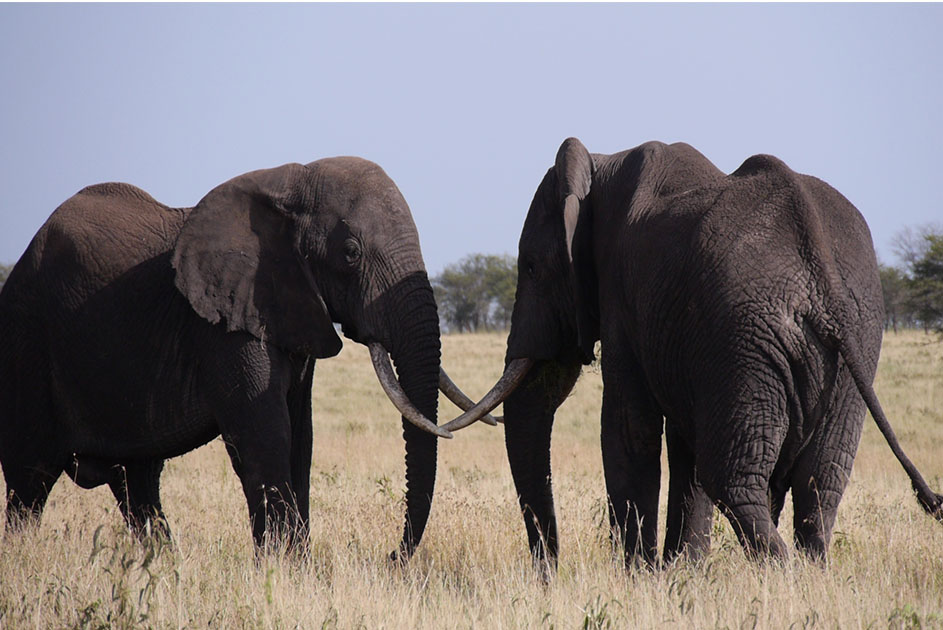Ruaha National Park
Ruaha national park is one of the few Tanzania’s famous wilderness area where one can have a rare experience of game viewing spiced up by the fascinating landscape. The park is rich of plants and animals such as Greater Kudu (Tragelaphus strepsiceros) which can not be found in any other national park. The park boasts of her almost untouched and unexplored ecosystem, making visitors’ safari experience very unique.
The park is notable for its varied dramatic scenery, its striking topography, especially around the Great Ruaha River, which is its heart, and which is home to crocodiles, hippos and wading birds. The rolling hills, groves of skeletal baobabs make it unique for visitors. Mountains in the south and west reach to about 1600m and 1900m respectively.
Running through the park are several ‘sand’ rivers, most of which dry up during the dry season, when they are used by wildlife as corridors to reach areas where water remains. Ruaha has a hot, dry climate which means the animals don’t tend to stray too far from dependable water sources. This makes predicating game movements far easier particularly during dry season. The best game viewing can be generally from May to November, but the bush is greener and prettier from January to June.
Nyerere National Park
Nyerere National Park is a newly established park, part of what is known as Selous Game Reserve. In 2019 it gained national park status, covering an area of 30000 square kilometres. The name was given in honor of the founder of the Nation, the late Mwalimu Julius Kambarage Nyerere. The park is a home to the most breath taking wildlife left in African continent and far from the crowds that visits the park in the Northern Tanzania.
It encompasses the Rufiji River, which flows through the Park. The sheer volume of game in Nyerere is outstanding, it is a home to a diverse range of wildlife with huge population of Hippos, Elephants, giraffe lions among others. The varying vegetation zones add a whole other dimension of flora, ranging from dense thickets to open wooded grassland scattered with palm trees. The park is Africa’s stronghold for lions and elephants and many other creatures.
Mikumi National Park
The Mikumi National Park near Morogoro, Tanzania, was established in 1964. It covers an area of 3,230 km² is the fourth largest in the country. The park is crossed by Tanzania’s A-7 highway. The park has a landscape of baobabs, black hardwood trees and grassy plains. With almost guaranteed year-round wildlife sightings. Mikumi makes an ideal safari destination for those without much time. Within its 3230 sq km – set between the Uluguru Mountains to the northeast, the Rubeho Mountains to the northwest and the Lumango Mountains to the southeast.
Mikumi National park host’s buffaloes, wildebeest, giraffes, elephants, lions, zebras, leopards, crocodiles and endangered wild dogs, and the chances are high that you will see a respectable sampling of these within a short time of entering the park. Most of the routes that cross the Mikumi proceed in the direction of the Ruaha National Park and the Nyerere National Park. The recommended season for visiting the park is the dry season between May and November, warm weather and beautiful sites ever visited in a lifetime.
It is quite simply a must do for a bird lovers and keen wildlife photographers. Of all the parks in the Northern circuit easiest to access and excellent game viewing and bird watching is guaranteed all year round. Also lake Manyara is the home tree-climbing lion. Any season is good for lake Manyara as there are always Hippo, Elephant, Bushbuck, Impala, Monkeys and Baboons to be seen. The bird life is also outstanding all year round but it probably better from September to April when the migrants arrive.






